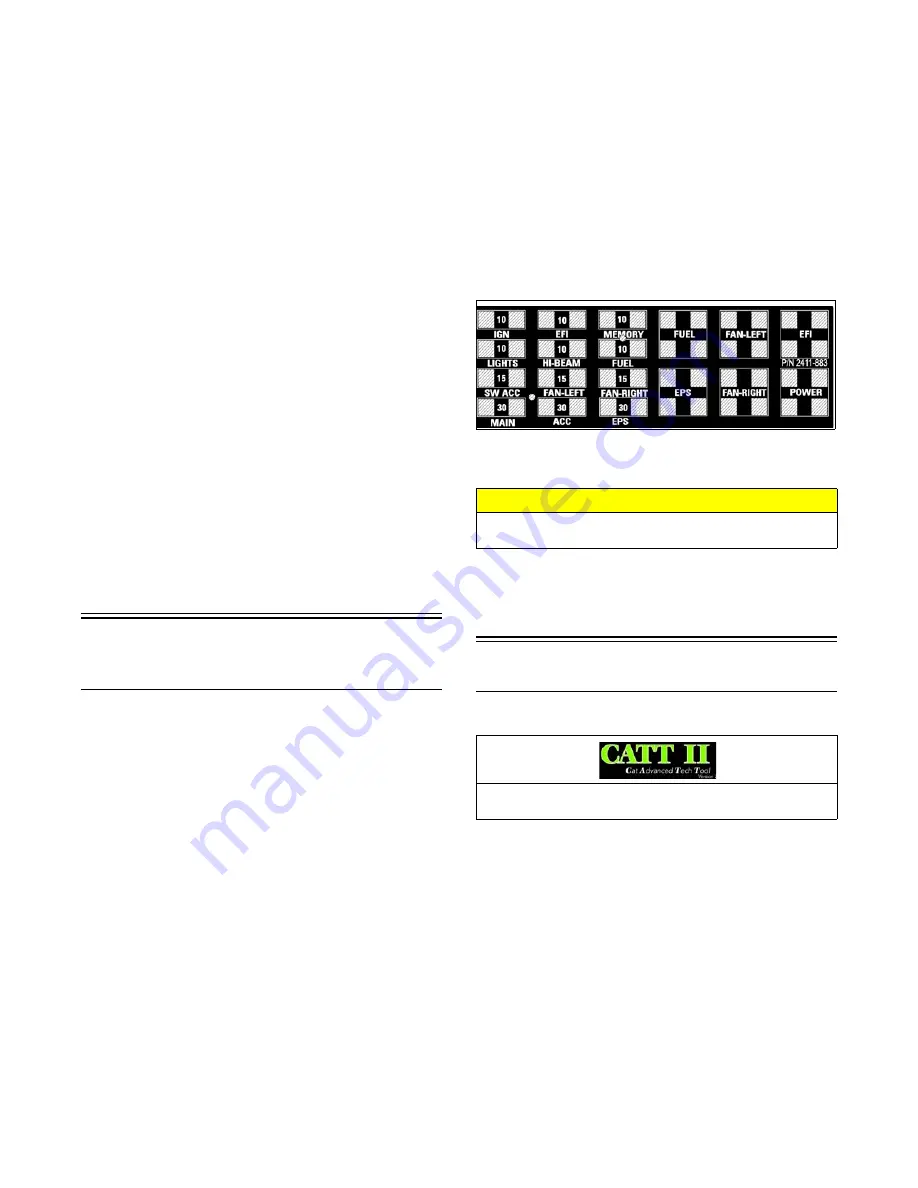
102
VOLTAGE (Taillight)
NOTE: Perform this test at the socket end of the
taillight-brakelight harness (pigtail). The ignition
switch must be in the ON position and either high
beam or low beam selected on the light switch.
1. Set the meter selector to the DC Voltage position.
2. Connect the black tester lead to the black wire; then
connect the red tester lead to the white wire.
3. With the ignition key ON and the switch in the HI or
LOW position, the meter must show battery voltage.
NOTE: If battery voltage is not shown and the head-
lights are illuminated, inspect the three-wire connec-
tor in the left-rear canopy tube at the juncture of the
canopy tube and lower frame. If battery voltage is
shown on the meter, replace the LED.
VOLTAGE (Brakelight)
NOTE: Perform this test at the socket end of the
taillight/brakelight harness (pigtail). The ignition
switch must be in the ON position.
1. Set the meter selector to the DC Voltage position.
2. Connect the red tester lead to the red/blue wire; then
connect the black tester lead to the black wire.
3. With the brake applied, the meter must show battery
voltage.
NOTE: If the meter shows no voltage, inspect the 10
amp ignition (IGN) fuse, brakelight switch, wiring
harness, or connectors.
Power Distribution Module
(PDM)
FUSES/RELAYS
NOTE: To access fuses and relays, compress the
locking tabs on either side of the PDM cover and lift
off.
The fuses are located in a power distribution module
under the passenger’s seat. If there is any type of electri-
cal system failure, always check the fuses first.
The 4-pin relays are identical plug-in type located on the
power distribution module. Relay function can be
checked by switching relay positions. The 4-pin relays
are interchangeable.
NOTE: The module and wiring harness are not a
serviceable component and must be replaced as an
assembly.
1. Remove a fuse from the power distribution module.
2. Set the meter selector to the DC Voltage position.
3. Connect the black tester lead to ground.
4. Using the red tester lead, contact each end of the fuse
holder connector terminals individually.
5. The meter must show battery voltage from one side
of the connector terminal ends.
NOTE: Battery voltage will be indicated from only
one side of the fuse holder connector terminal; the
other side will show no voltage.
NOTE: When testing the HI fuse holder, the head-
light OFF/HI/LO switch must be in the HI position;
when testing the LIGHTS fuse holder, the headlight
dimmer switch can be in either the HI or LO position.
NOTE: If the meter shows no battery voltage, trou-
bleshoot the battery, switches, power distribution
module, or the main wiring harness.
2411-883
This vehicle uses automotive-style (see-through) fuses. The
fuses can be visually inspected; replace fuse if link is open.
NOTE: Make sure the fuses are returned to their
proper position according to amperage. Refer to the
amperage listed under each fuse on the power distri-
bution module.
EFI Sensor/Components
FUEL INJECTOR
Voltage
Remove the connector from the fuel injector. Place the
red meter lead to the orange wire and black meter lead to
ground. With the ignition switch in the on position the
meter must read battery voltage.
Resistance
With the connector still removed from the injector, place
the red meter lead to either terminal; then connect the
black tester lead to the other terminal. Reading is typi-
cally 12 ohms.
NOTE: If voltage is not present, troubleshoot the
battery, connector pins, wiring harness, fuses, or
relay. If resistance is not present or largely out of
specification, replace the injector.
CAUTION
Always replace a blown fuse with a fuse of the same
type and rating.
Component data can be tested using the CATT II. Utilize
the Test screen.
















































